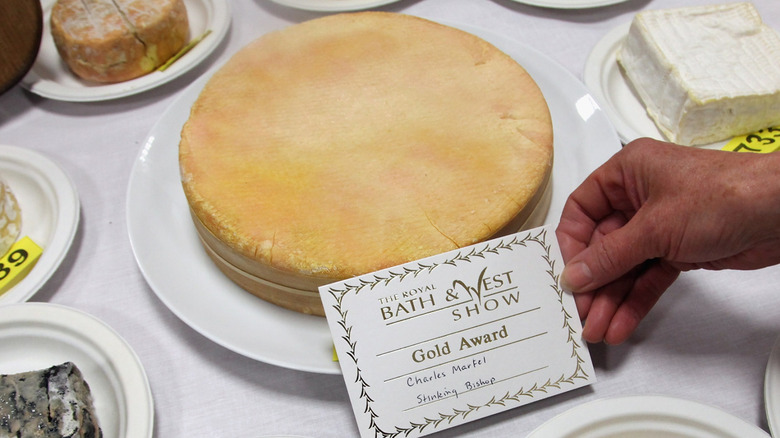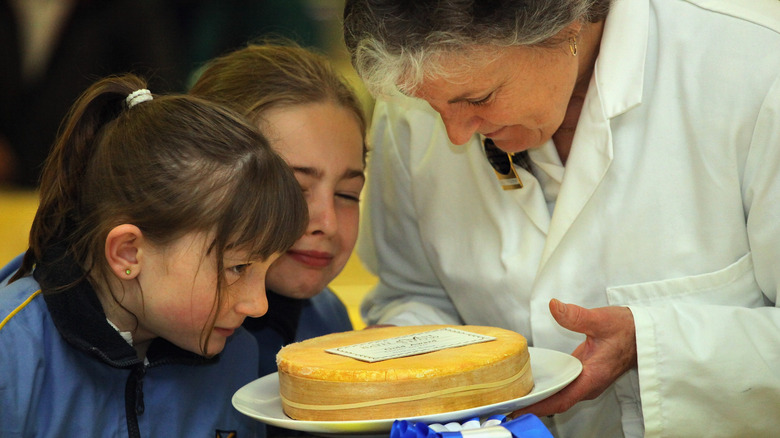Stinking Bishop: How The Classy Cheese Got Its Off-Putting Name
Strong and smelly cheeses get a bad rap that they don't really deserve. While full-bodied flavor can take some getting used to, learning to enjoy stronger cheeses like blue cheese is easier than one would think. In fact, stinky cheese can actually be an underrated ingredient in classic mac and cheese.
To many, it can be hard to imagine that stinky cheeses are highly useful, let alone highly loved; however, Stinking Bishop cheese quickly proves everyone wrong. True to its name, Stinking Bishop does have a unique smell, which comes from the fact that the cheese is soaked in perry, also known as pear cider, as it's made. The name also has a double meaning; it is named after Frederick Bishop, a pear farmer who lived over a century ago, and who was known for smelling incredibly bad.
The namesake wasn't chosen at random; Frederick Bishop himself, as well as the pears on his farm, were the original keepers of the nickname "Stinking Bishop." It wasn't until 1972 that the cheese was invented and the name transferred to it, because Stinking Bishop pears were used in the perry the cheese was soaked in. To this day, the name rings true, with the cheese being known as the smelliest cheese in all of Britain.
How is Stinking Bishop cheese made?
Stinking Bishop is made by combining cow's milk with vegetarian rennet. The rind of the cheese is washed with perry, which is what causes the cheese to smell. To this day, this cheese is made by hand. However, this artisanal quality also means it can be somewhat difficult to find as it is not widely available in supermarkets.
Part of what makes Stinking Bishop unique is its ripening process. The rind is washed before it is soaked in pear cider made specifically from the Stinking Bishop pear. During the aging process, the cheese undergoes a new soak every four weeks.
Currently, only one place in the world makes Stinking Bishop cheese: Charles Martell & Son. The milk for the cheese specifically comes from Gloucester cattle. Due to these specifications and limitations, only 20 tons of Stinking Bishop are made per year.

